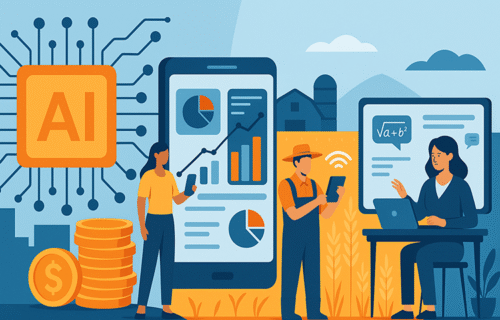India’s AI start-up ecosystem is moving from promise to scale, powered by ubiquitous digital rails and a deep pool of technical talent. Government and industry leaders increasingly talk about India becoming an AI superpower by 2047, but the more immediate story is the rapid build-out of companies applying AI across finance, agriculture and education—and the momentum is undeniable.
A recent mapping of the generative-AI landscape shows the number of start-ups in the field has multiplied several times over the past two years, with Indian founders increasingly visible among global innovators. Market projections suggest India’s AI industry could reach close to $17 billion by 2027, growing at a rate of 25–35% annually, driven by enterprise adoption and its large AI-skilled workforce.
Fintech has been at the sharp end of India’s AI adoption. Unified Payments Interface (UPI) now processes more than 15 billion transactions every month, with annualized values running into trillions of dollars. On this backbone, platforms such as PhonePe, Razorpay and CRED have expanded from payments into lending and digital banking. Bengaluru-based unicorn Perfios aggregates real-time financial data for faster loan underwriting, while Crediwatch uses AI analytics to assess the creditworthiness of small businesses where traditional data are scarce. India has also emerged as the third-largest hub for fintech unicorns globally, behind only the United States and China.
Agriculture, long a backbone of the Indian economy, is also undergoing a technological shift. DeHaat serves more than 1.8 million farmers across multiple states with AI-enabled advisory services, input distribution and market linkages, while Cropin combines satellite imagery with machine learning to help farmers manage crops and forecast yields. These platforms are bringing actionable insights not just to large producers but also to smallholders, who are often the most underserved.
Education has become another major frontier. Valued at around $7.5 billion, India’s edtech sector is expected to quadruple in size by 2030. AI-driven platforms like Doubtnut allow students to upload math or science problems and receive instant, step-by-step solutions, extending high-quality tutoring to Tier-2 and Tier-3 cities. Several Indian edtech firms are also expanding internationally into African and South American markets.
A key enabler of this ecosystem is India’s workforce. Studies rank the country among the leaders globally in AI skill penetration and hiring growth, underscoring its depth and momentum in training engineers, data scientists and AI specialists.
Challenges remain: India still lags leading economies in AI research output, investment intensity and patents, and funding flows to start-ups remain uneven. Yet with digital public goods such as UPI and Aadhaar lowering distribution costs and enterprises accelerating AI adoption, the direction of travel is clear.
If India does emerge as a global AI power by its centenary of independence, it will be less because of a single breakthrough and more because thousands of pragmatic, AI-enabled companies solved pressing problems in finance, farming and classrooms—and then exported those solutions to the world.
© 2025 www.cijeurope.com
